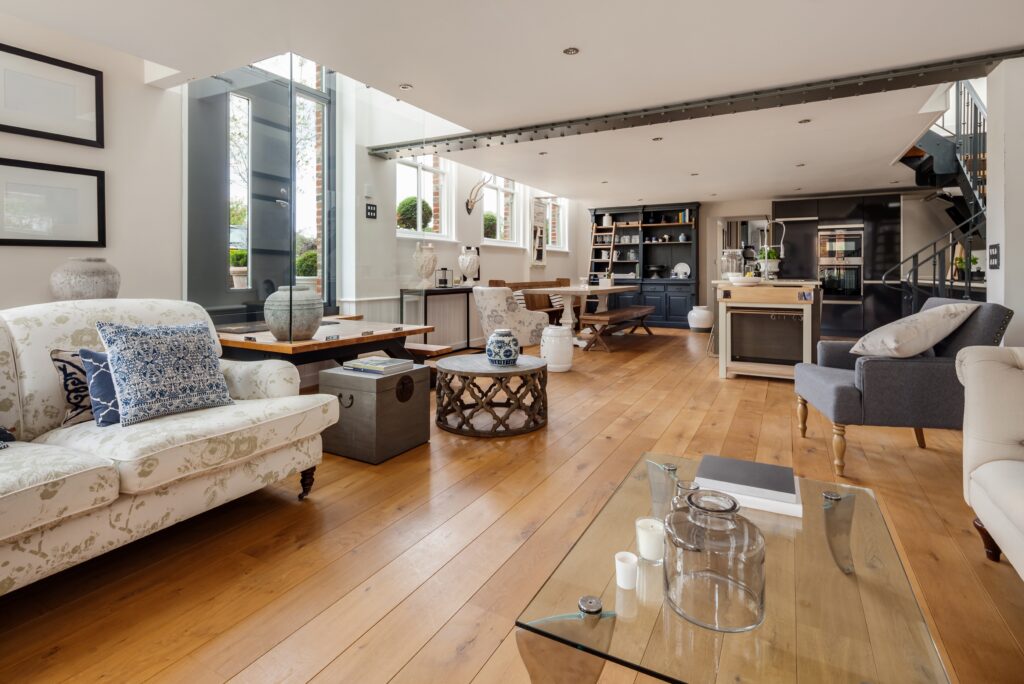Designing an open floor plan can be a daunting task, but it doesn’t have to be. With a little creativity and some strategic planning, you can create distinct zones within one big room.

Consider Conversation
When designing a living room or den, it’s important to consider how people will use the space. Most of the time, a few people will be sitting around and chatting. To ensure that your setup is conducive to conversation, you should create two zones if the space is too big. You don’t want the chairs too far from the couch, as this can make it difficult to chat without yelling across the room.

Create Vignettes
In addition to setting up a big sitting area, you can create small moments throughout the room by grouping furniture together. A grouping of an armchair, side table, and lamp can become its own little space. By creating these vignettes, you can make the room feel more intimate and functional.

Add a Rug
When dividing up a space, it’s important to give visual cues that denote separate areas. One easy way to do this is by using area rugs. Group furniture together on or around the rug to section out the room. This can also help to anchor the space and create a cozy atmosphere.

Find a Focal Point
To figure out where each zone should be placed, it’s helpful to center them around different focal points. This could be an architectural piece like a fireplace or chandelier, or you can create your own focal point with furniture. If you have to float a couch in the middle of the room, you can center it with a console table behind it. Just make sure you have walking space around each area to set them apart and keep guests (or yourself) from bumping into furniture. A clearance of three feet around most things is ideal.

Vary the Color Palette
To make each distinct zone feel unique, it’s important to vary the color palette. Each space will have a different but cohesive palette. Some spaces will be darker and moodier, while others will be lighter and brighter. You could also use wood features or painted furniture to help create this. By varying the color palette, you can create distinct zones that feel cohesive and intentional.


